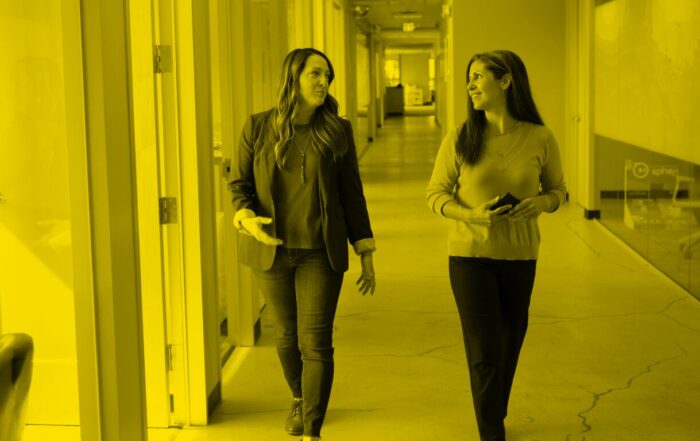Although many organizations have policies for equal opportunity in employment and initiatives to increase Diversity, Equity, and Inclusion (DEI), bias and discrimination in hiring persist. One reason for this may be simple: recent research by David Munguia Gomez and Emma Levine suggests there is a “policy-people gap” wherein, across different selection contexts, decision makers are more likely to favor disadvantaged over advantaged applicants when they are choosing policies, but not when they are hiring or selecting individual applicants.
These results hold across 16 studies that asked a total of 10,883 participants to make a choice between either two individuals or two policies that favor those individuals. The studies were conducted across different population groups such as admission officers, employees with hiring experience in the technology industry, and even the general public. While past research has looked at a policy-implementation gap, where decision makers endorse policies or principles while failing to consider what implementation of those policies actually means , Munguia Gomez and Levine found that even when decision makers are clear about the implementation of the selection policies, the policy-people gap persists.
Why does this gap between policy and individual selection decisions exist? It turns out that individuals make decisions differently when they are thinking about an individual versus a group: their perceptions of fairness changes. As Munguia Gomez, Assistant Professor at Yale School of Management, shares, “We have these two conflicting views of what is fair. One view comes out when making individual decisions and that view is microjustice – selecting people based on a particular input like that person’s achievements or qualifications. People with a greater level of that achievement should be more likely to be selected. That seems fair at the individual level to people. At the policy level, what seems fair is macrojustice – what does the admitted or hired group look like? And do the policies represent different groups in society that we may care about like race, gender, class etc.?”
…individuals make decisions differently when they are thinking about an individual versus a group: their perceptions of fairness changes.
Therefore, when decision makers look at policies, they think about what is fair in the aggregate, but when making individual selection decisions, they focus more on what is fair for the applicant under consideration. Note that in their work, the authors focus on cases that show that the gap results from two views of fairness clashing with each other. However, macro and microjustice perspectives may not necessarily be mutually exclusive. That is, when there is no people-policy gap, what is fair in the aggregate may overlap with what is fair at the individual level.
To help decision makers align their choices, the authors tested a simple intervention. Before showing participants candidate profiles to select from, they told participants about both micro and macrojustice perceptions of fairness, but explicitly stated that the institution prioritizes macrojustice while making the selection decision. They found that this intervention narrowed down the policy-people gap by half. However, this alignment of choices did not change decision makers’ underlying views of fairness. Nevertheless, it suggests how organizations can help decision makers choose more consistently with the policies set by organizations and overrule their own beliefs about fairness.
As Munguia Gomez puts it, “The realization that we all have these two senses of fairness within us, that we can disagree with ourselves around what we think is right, offers some solutions and hope because we don’t need to all have the same set of beliefs, we just to be aligned on the same view of fairness or what to prioritize.”
When selecting individuals, it is not clear how people think about different levels of achievement in light of candidates’ circumstances, such as their socioeconomic advantage or disadvantage. This is something that Munguia Gomez is actively working on. For example, awareness of an applicant’s socioeconomic disadvantage may lead decision makers to be even more impressed with their SAT scores; in contrast, an applicant’s socioeconomic advantage may make their SAT scores seem less impressive in light of the resources they had available to them. These circumstances can add an important layer to this story: fairness concerns may nudge decision makers to adjust their impressions more negatively for advantaged groups.
“…we don’t need to all have the same set of beliefs, we just to be aligned on the same view of fairness or what to prioritize…”
This understanding of micro and macrojustice when making decisions can also shed light on other contexts. Munguia Gomez is particularly interested in whether these competing concerns of fairness would also play a role when thinking about how to allocate scarce resources (like ventilators or organs) or where people should live in light of rising housing costs and gentrification. That is, when making these tough decisions, do decision makers face a similar competing tug between micro vs macrojustice perceptions of fairness?
In the meantime, Munguia Gomez urges that it is imperative for organizations and colleges to acknowledge three key takeaways from this work: “One, there is a gap between individual and policy decisions and that can help explain why organizations are not more diverse; two, this gap exists because people have conflicting views of what is fair, and three, interventions that can align people on the same view of fairness can work.”
References
[1] Bell, J. M., & Hartmann, D. (2007). Diversity in everyday discourse: The cultural ambiguities and consequences of “happy talk”. American Sociological Review, 72(6), 895-914.
______
Research brief prepared by:
Title
The policy–people gap: Decision-makers choose policies that favor different applicants than they select when making individual decisions
Author
David M. Munguia Gomez, Emma E. Levine
Source
Academy of Management Journal
Published
2022
DOI
10.5465/amj.2020.1740
Link
https://doi.org/10.5465/amj.2020.1740







